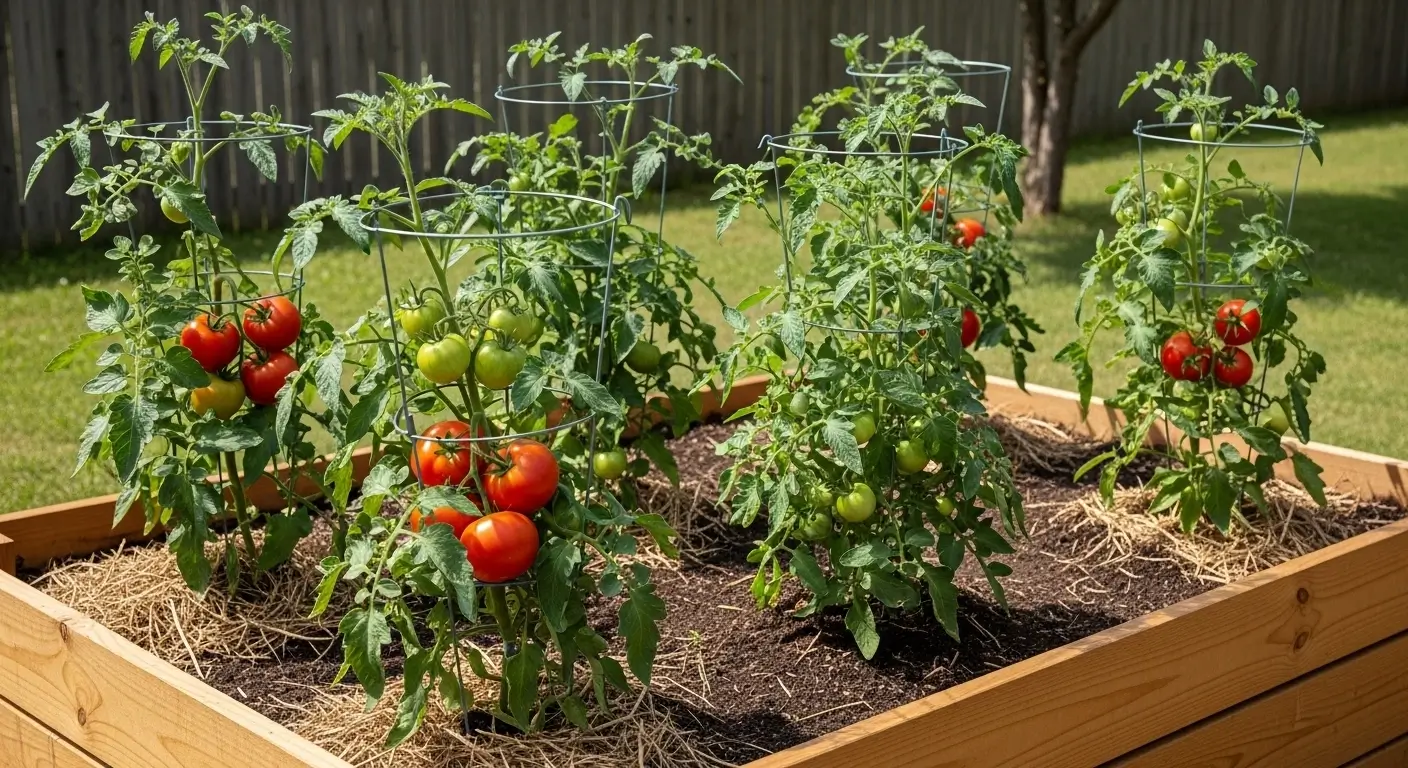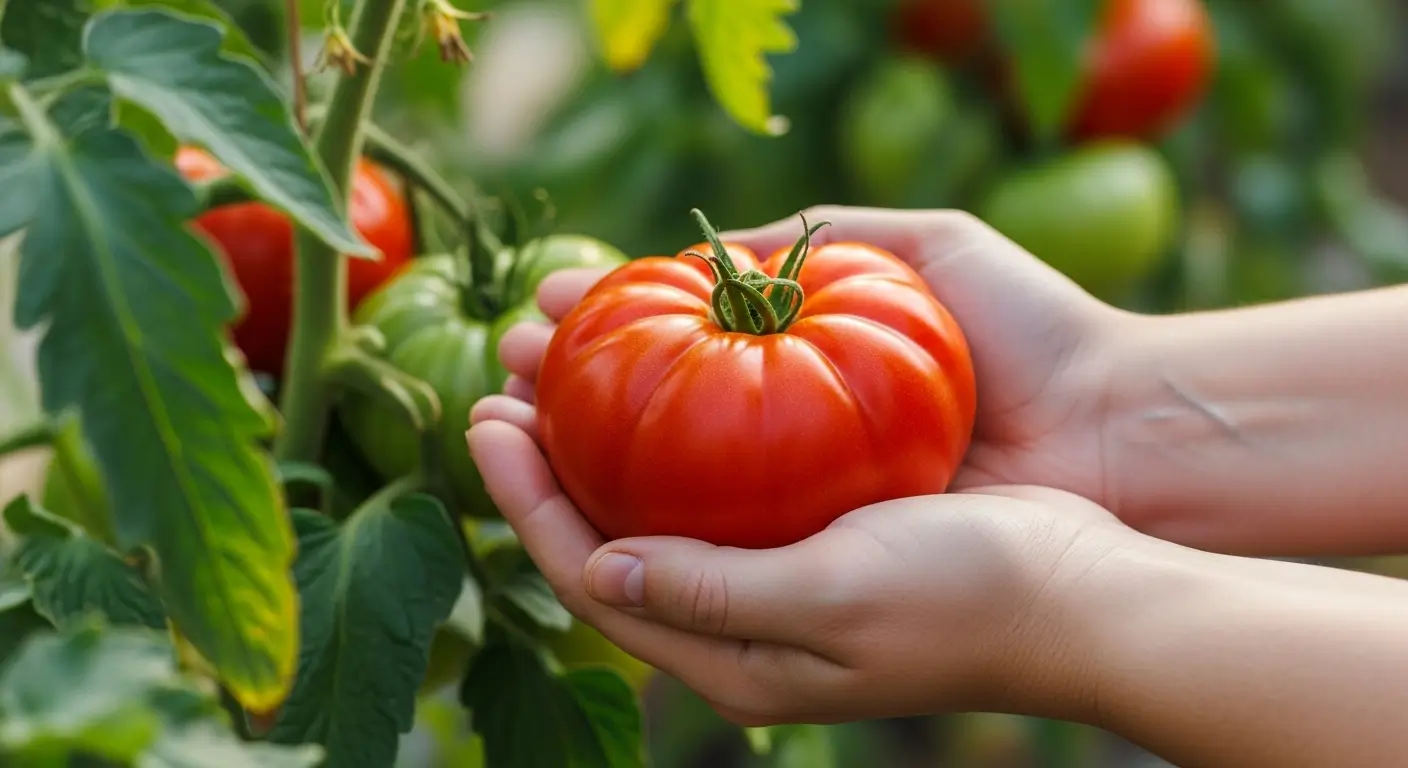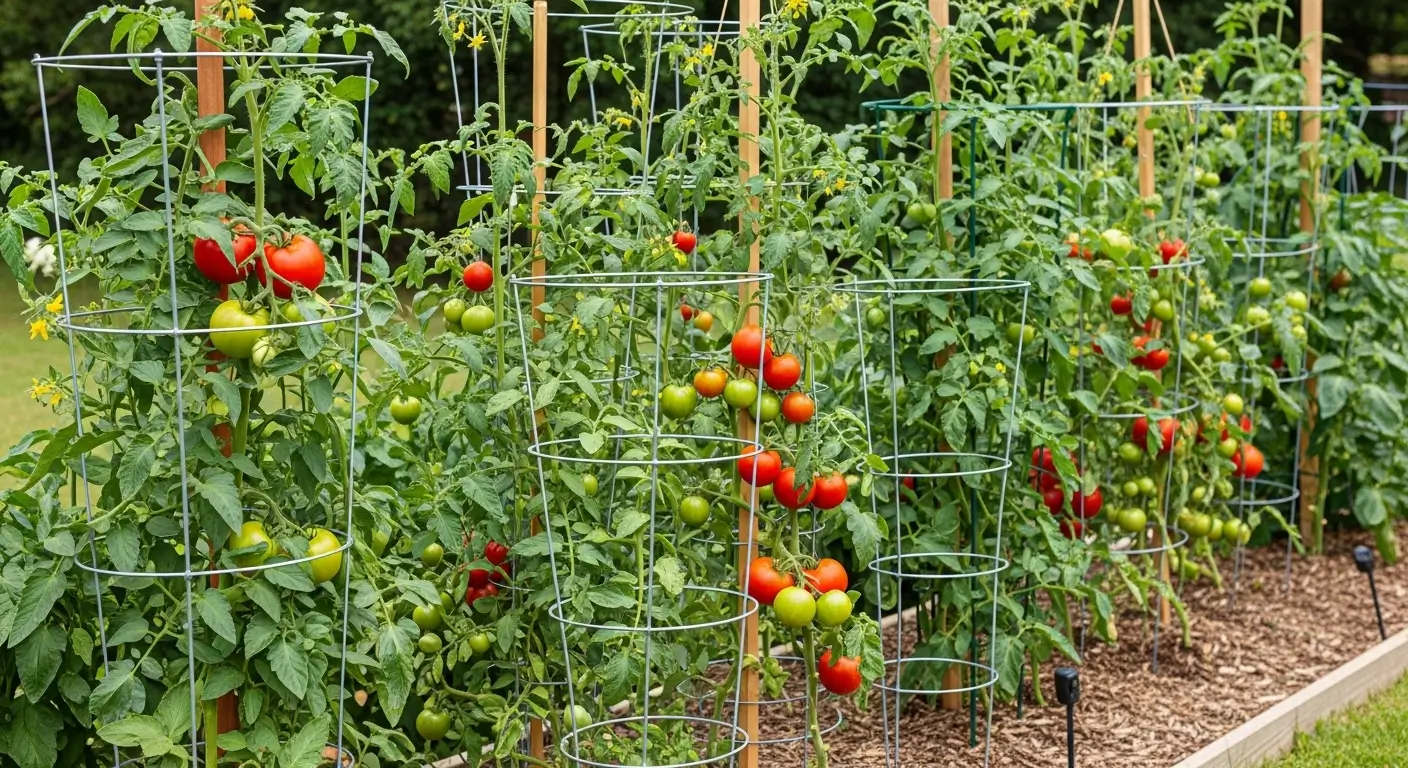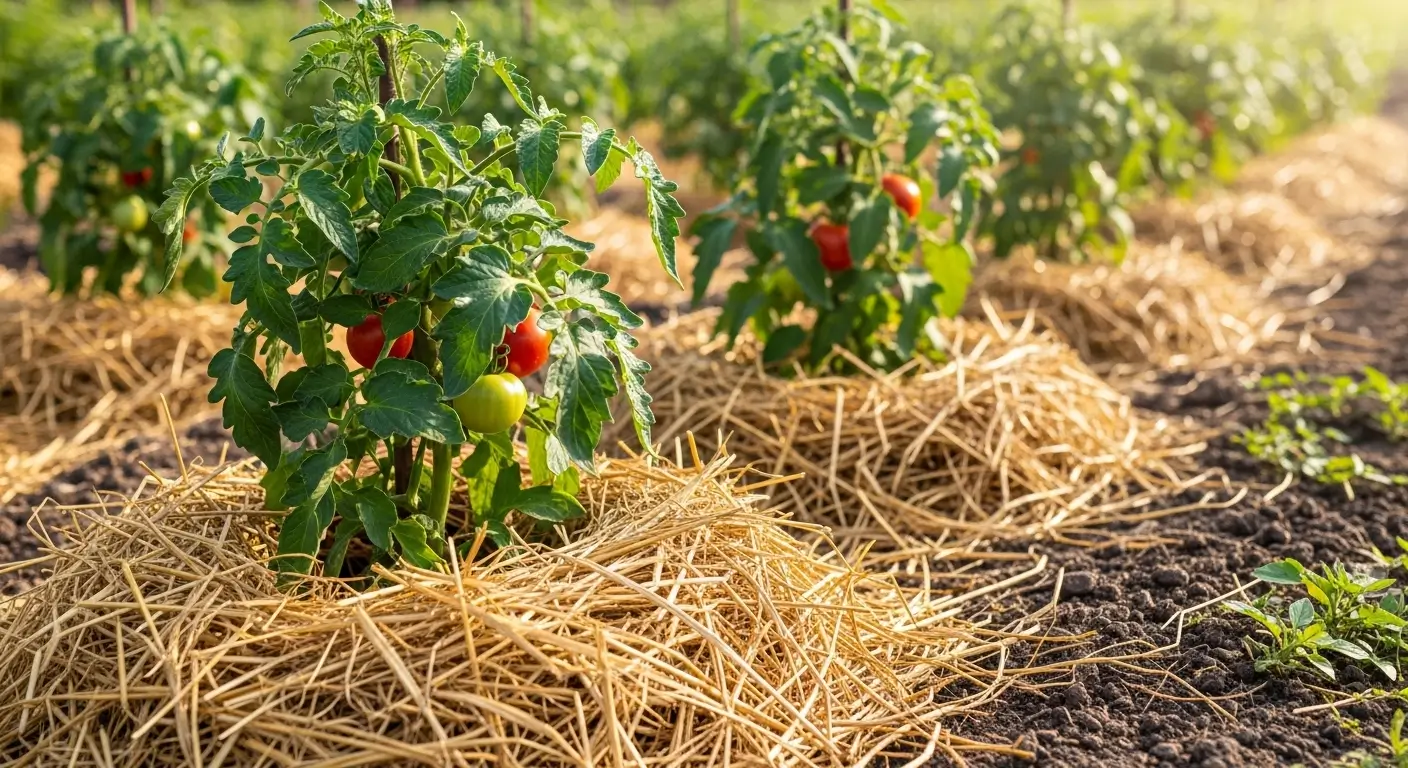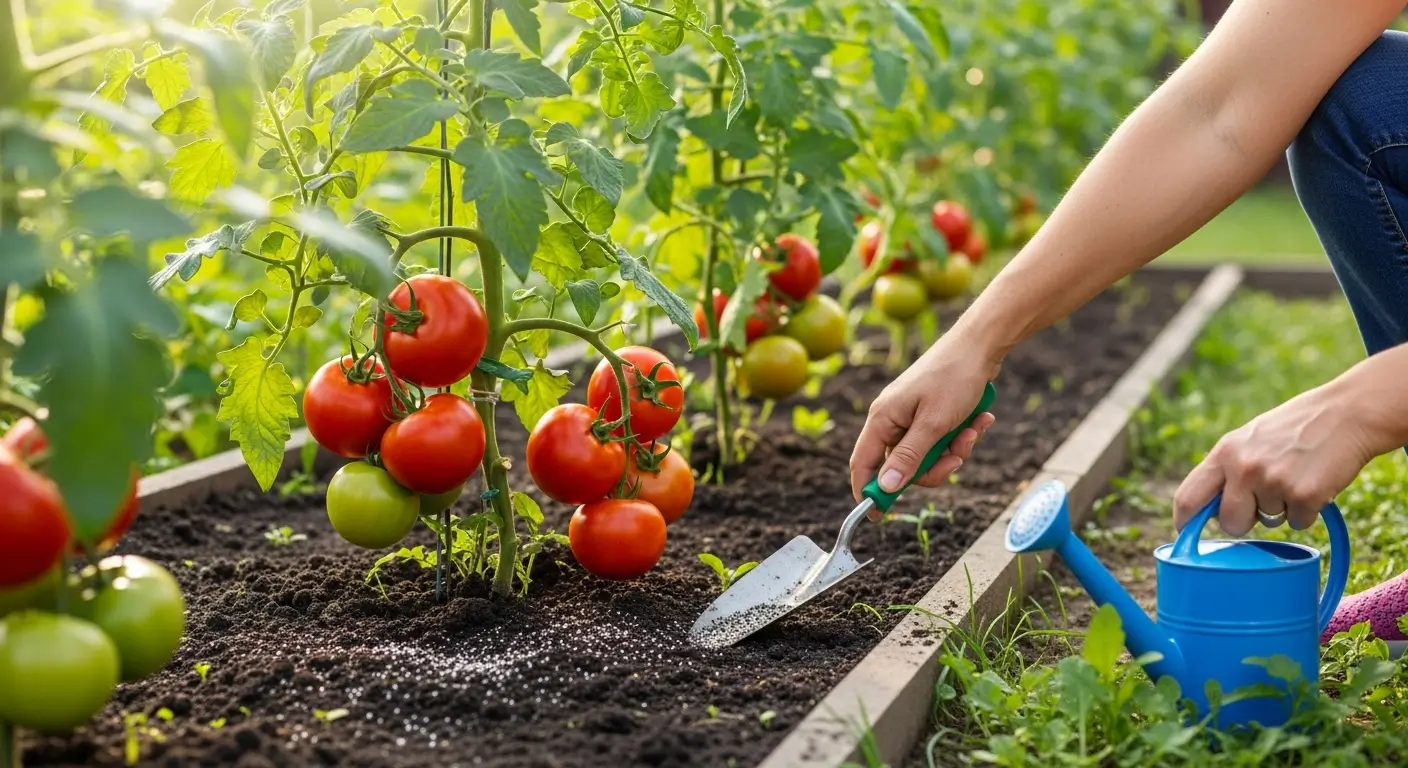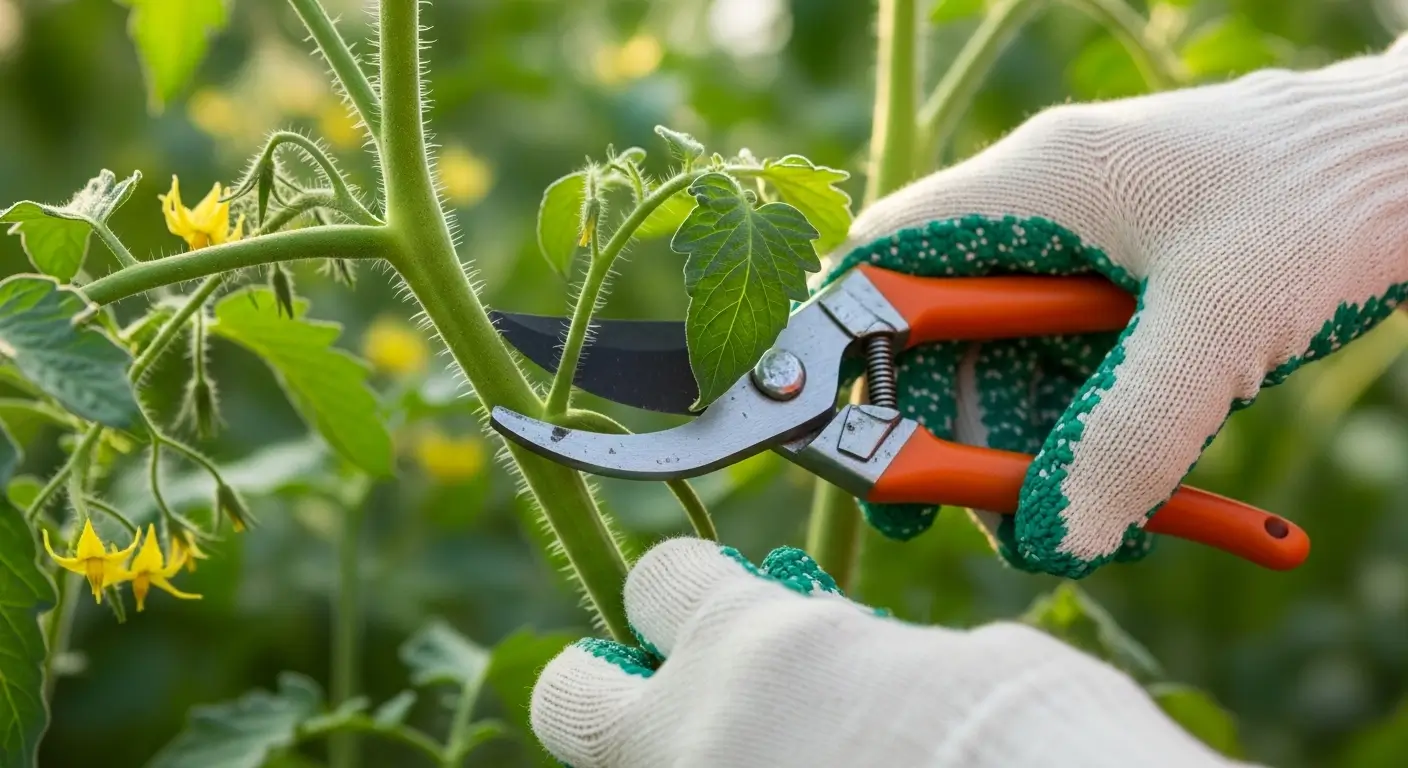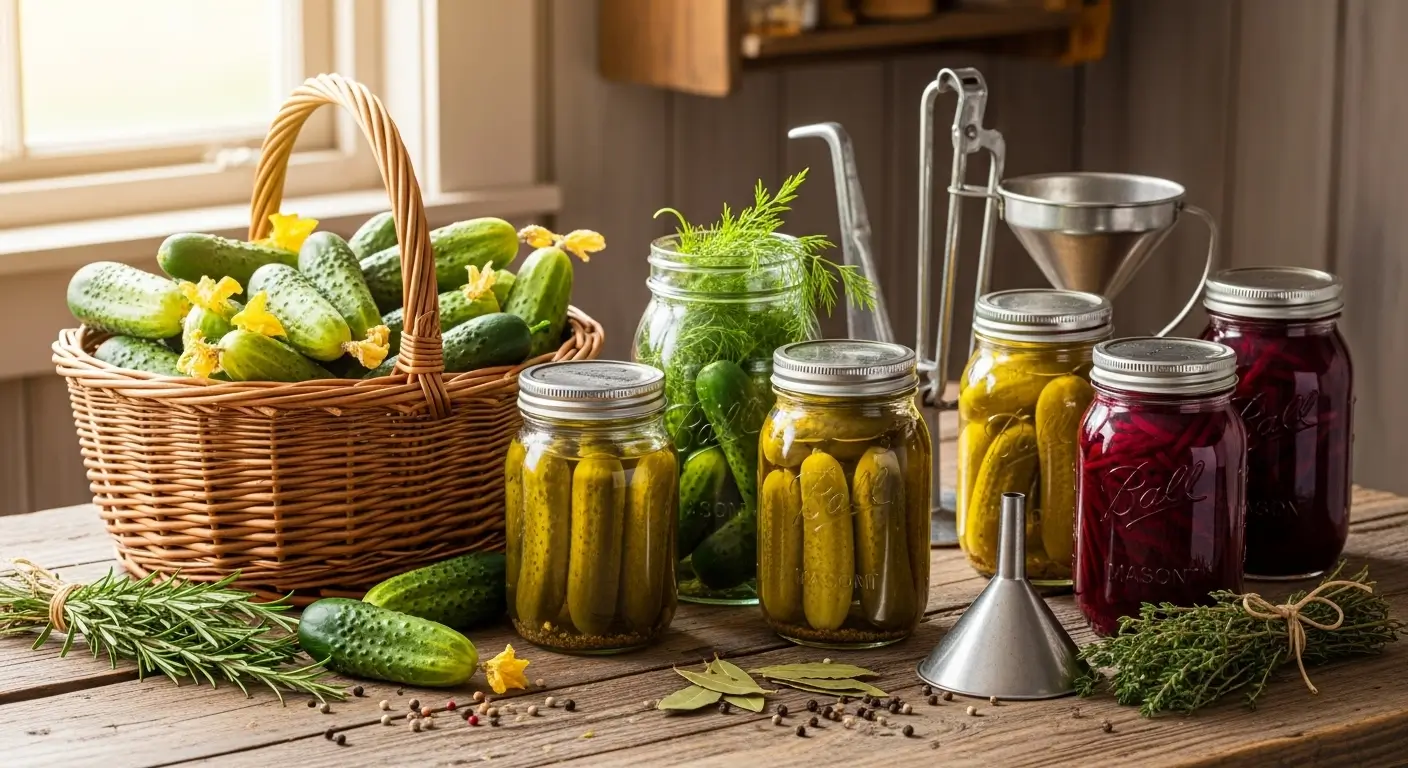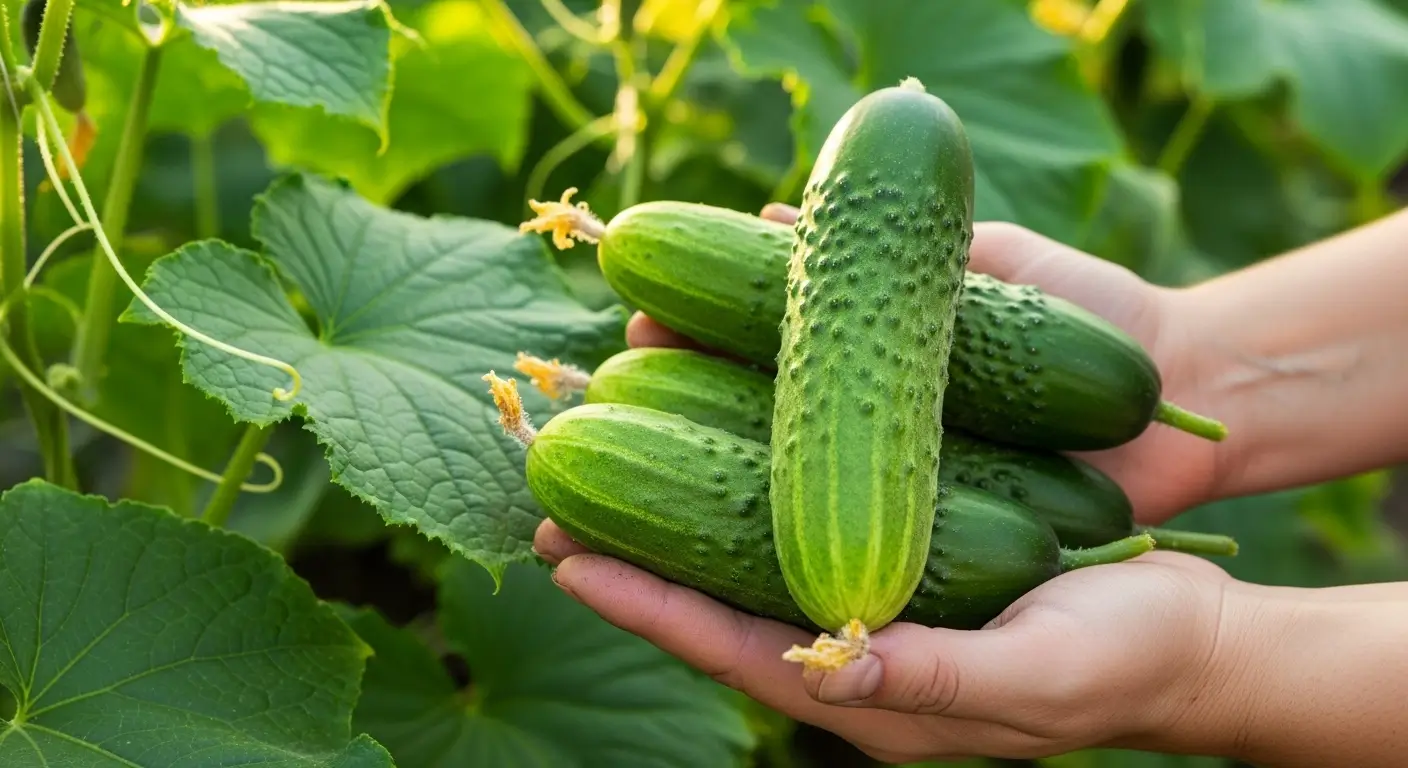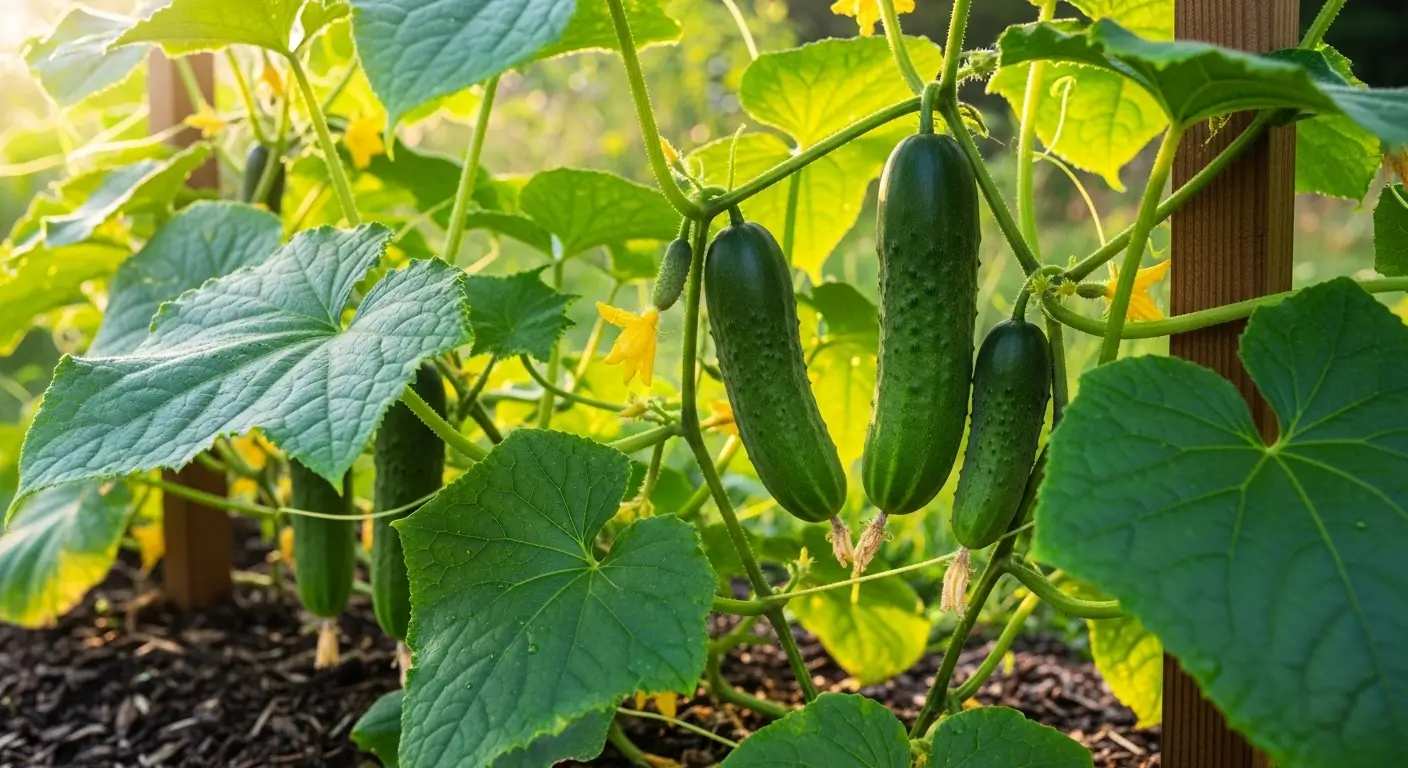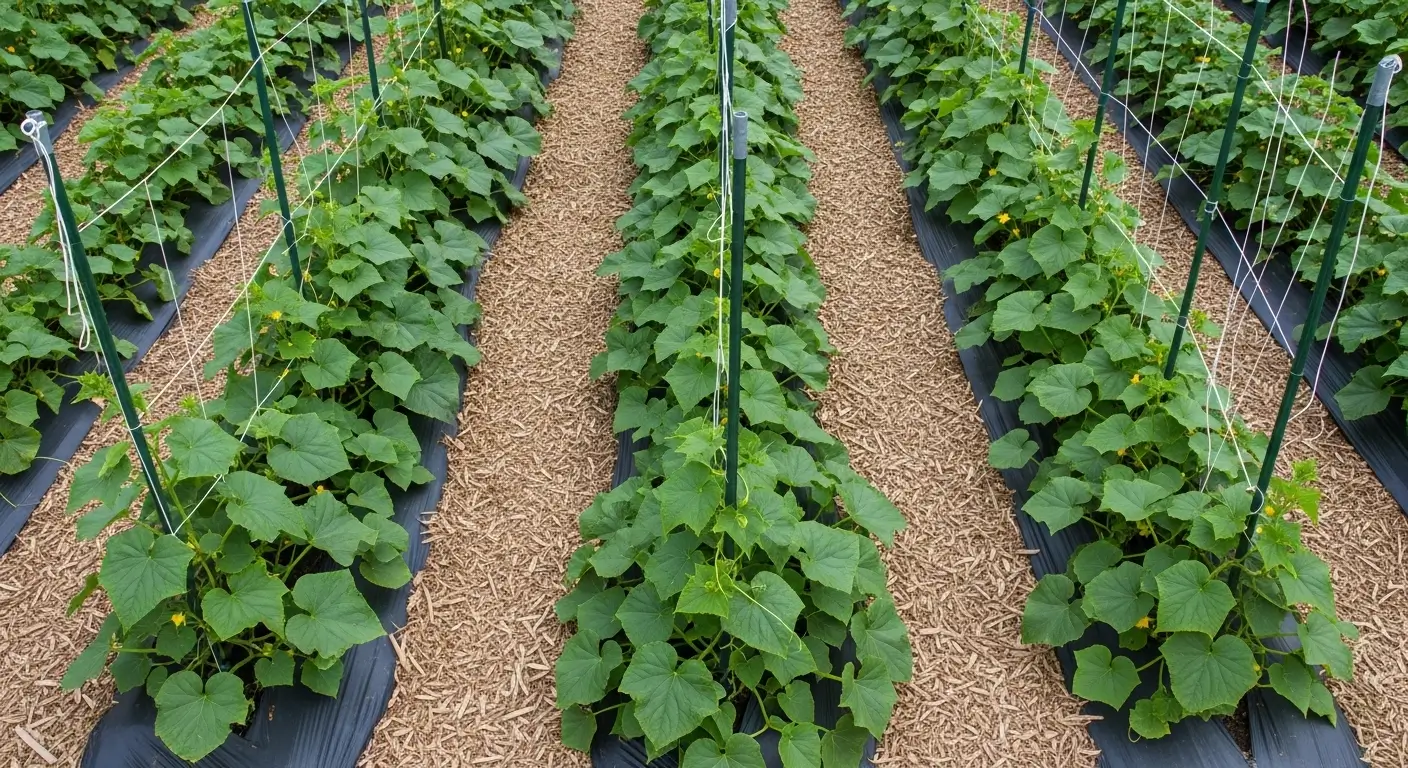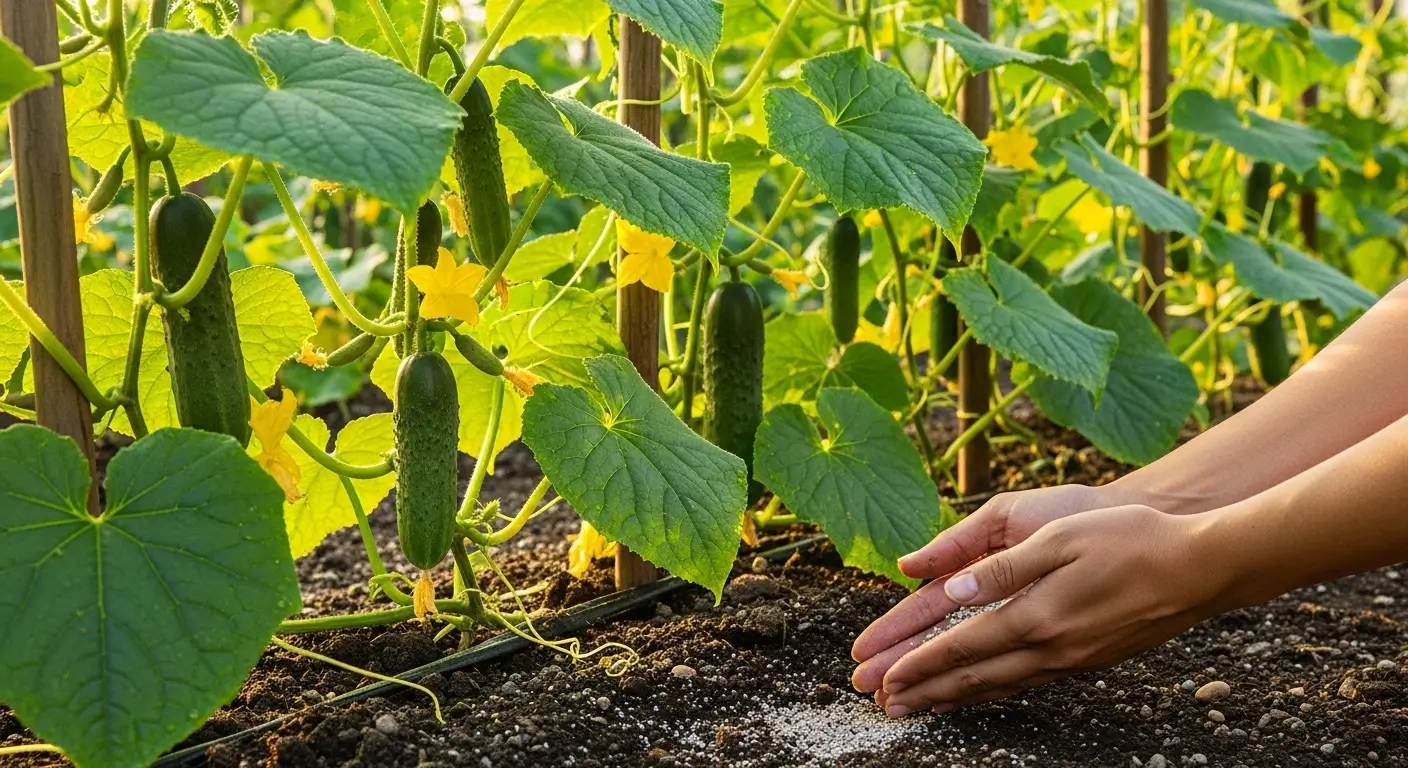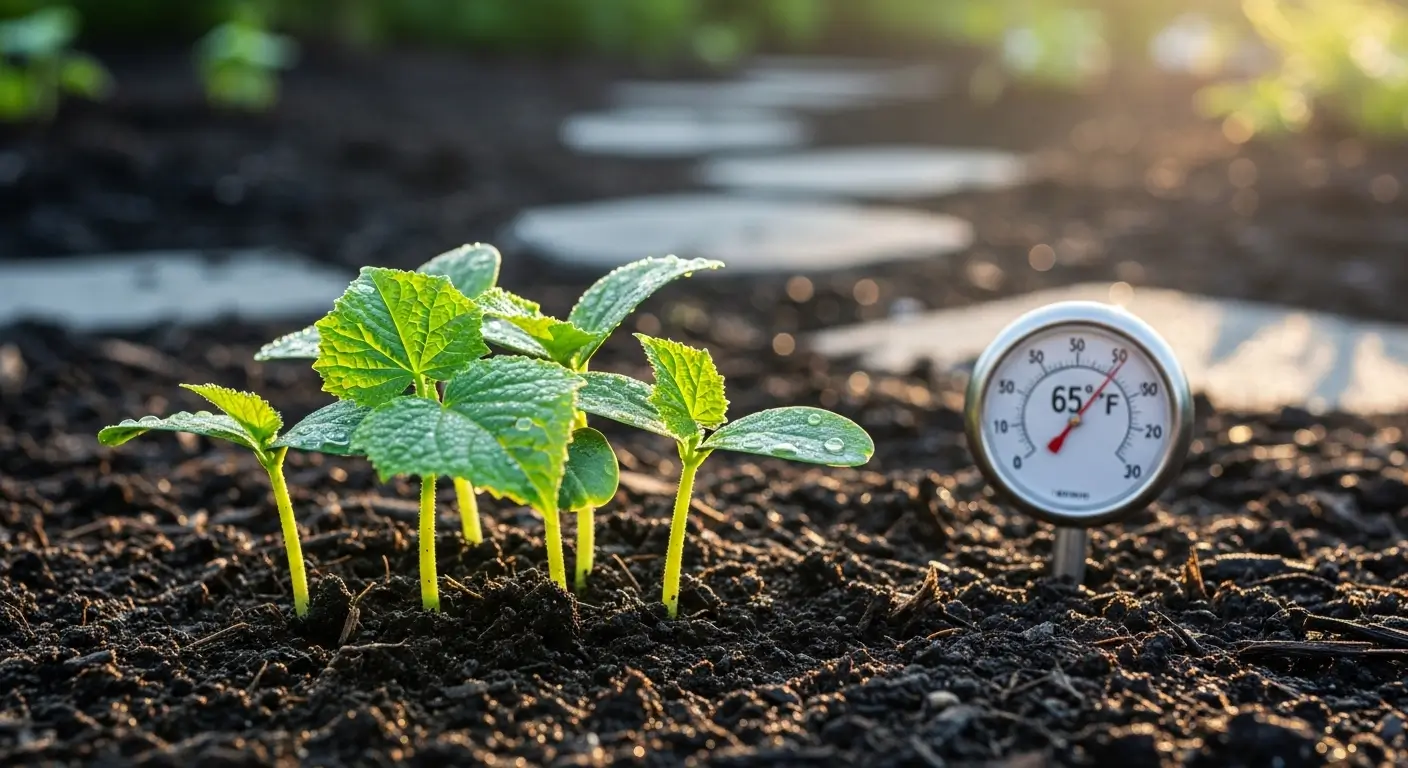Okay, here’s the deal – my first crack at raised bed tomatoes was an absolute train wreck. I’m talking about stuffing six tomato plants into this tiny 4×4 bed like I was playing some weird gardening Tetris. Used whatever cheap dirt I could find at the store, then spent the whole summer wondering why my plants looked like they were having an existential crisis.
Yeah, not my finest gardening moment.
But hey, that was eight years ago, and now? Well, let’s say my tomatoes are looking pretty good these days. Mrs. Peterson from next door asked me for my “secret” last week, which made my whole month.
Look, growing raised bed tomatoes isn’t some crazy complicated science experiment, but there are definitely a few tricks that’ll save you from face-planting like I did. Whether you’re totally new to this or you’ve had your own tomato disasters (we’ve all been there), I’m gonna walk you through everything you need to know.
Trust me, once you nail this, you’ll wonder why you ever tried growing tomatoes any other way.
Table of Contents
Why Raised Beds Are Perfect for Tomatoes
Here’s the thing about tomatoes – they’re basically the drama queens of the vegetable garden. They want perfect drainage but also constant moisture. Rich soil but not TOO rich. And don’t even get me started on how picky they are about temperature!
Raised beds solve 90% of these headaches. The drainage alone is worth it – I used to lose plants every year to root rot in my clay-heavy soil. It was so frustrating! But with raised beds? The extra water drains while maintaining enough moisture for those thirsty roots.
Plus, the soil warms up way faster in spring, which means I can get my plants in the ground earlier than all my neighbors. There’s something satisfying about that.
And here’s what I really love – you get total control over your soil. No more fighting with whatever Mother Nature decided to dump in your yard. You’re basically building the perfect tomato paradise from scratch.
Creating the Perfect Raised Bed Soil Mix for Tomatoes
This is where most people mess up (myself included, back in the day). You can’t just dump any old dirt in there and expect miracles. Your raised bed soil mix for tomatoes needs to be something special, like a custom smoothie for your plants.
My Go-To Soil Recipe
After way too many experiments and a few failures I’d rather forget, here’s what actually works:
- 40% good compost (I make my own now, but the bagged organic stuff works great too)
- 30% aged manure or worm castings (chicken manure compost is my jam)
- 20% coconut coir or peat moss (keeps everything nice and moist)
- 10% perlite or coarse sand (so it doesn’t turn into mud)
I also toss in about 2 cups of organic fertilizer per 4×8 bed and throw in some bone meal for good measure. The result? Soil that’s fluffy like cake and packed with all the good stuff your tomatoes are craving. For more detailed soil testing information, the University of Minnesota Extension provides excellent guidance on optimal growing conditions.
Now, I know what you’re thinking – “Grace, this sounds great, but how much of each ingredient do I actually need for MY bed?” I used to sit there with a calculator and a notepad, trying to figure out the math every spring. It was honestly kind of a pain.
So I put together this handy calculator that’ll do all the work for you. Just plug in your bed dimensions and it’ll tell you exactly how much compost, manure, coir, and perlite to buy. No more guessing or over-buying!
🍅 Raised Bed Tomato Soil Mix Calculator
Pretty cool, right? I wish I’d had something like this when I was starting out – would’ve saved me from that awkward conversation with the garden center guy when I showed up with a pickup truck for what turned out to be way too much soil.
The Depth Dilemma
Your bed needs to be at least 12 inches deep, but honestly? Go deeper if you can swing it. I learned this one the hard way when my plants in the shallow beds started getting all cramped by mid-summer. My 18-inch deep beds are like tomato heaven – especially for those crazy tall indeterminate varieties.
Mastering Spacing Tomatoes in Raised Beds
Oh man, this is where I really went overboard with the research. I was so determined not to repeat my plant-cramming disaster that I spent too much time measuring and re-measuring everything.
The Magic Numbers
For determinate tomatoes (those are the bushy ones that stay nice and compact), give each plant about 2-3 square feet. In a 4×8 bed, that’s only 5-6 plants max. I know – it looks like a lot of empty space at first, but stick with me here.
The indeterminate ones (the climbers that keep going and going) need even more room, like 4 square feet each. That means only 4 plants in a 4×8 bed. I used to think this was crazy and wasteful until I saw how much more productive, happy, and well-spaced plants actually are.
My Personal Spacing Strategy
Here’s what works for me: I go with a grid pattern, measuring from the center of each plant. For the compact varieties, that’s about 18-24 inches apart. For the climbers, I go full 24-30 inches.
And here’s a tip – leave at least 12 inches between your plants and the edge of the bed. Good air flow prevents nasty fungal issues; nobody wants to deal with that headache.
How to Grow Tomatoes in Raised Beds: Step by Step
Let me walk you through exactly how I do this, from getting the soil ready to harvesting those beautiful tomatoes.
Spring Preparation (March-April in Zone 5b)
First thing each spring, I refresh my soil. Even the best setup gets a little tired after a growing season. I add 2-3 inches of fresh compost and work it into the top bit of the soil.
Then comes the most challenging part – waiting. I don’t plant until the soil hits 60°F and stays there. I learned this lesson when a surprise cold snap turned my eager early plantings into expensive compost. Ouch.
To find your specific planting zone, check the official USDA Plant Hardiness Zone Map.
Planting Day Magic (Mid to Late May)
When it’s finally time to plant, I dig holes a bit deeper than the root ball and add some compost mixed with bone meal. Here’s something cool – tomatoes actually love being planted deep. I bury about 2/3 of the stem, which helps them grow stronger roots.
I always plant in the evening or when it’s cloudy to avoid shocking the plants. Then I give them a good drink and try not to hover too much (easier said than done, right?).
Support Systems That Actually Work
Here’s something I wish someone had told me earlier – put up your supports when you plant, not when your plants are already falling over like drunk college students. I use sturdy cages for the compact varieties and tall stakes for the climbers.
For raised beds, 6-foot cages work great for most determinate types. For the indeterminates, I use 8-foot stakes driven way down deep. These climbing varieties will seriously surprise you with how tall they get!
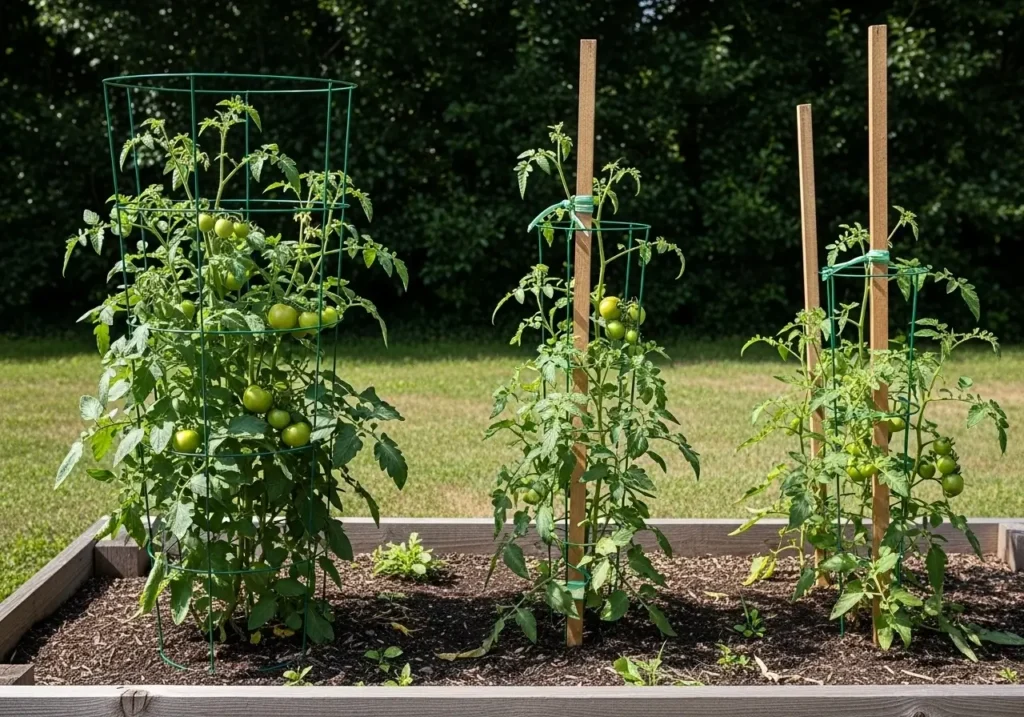
Seasonal Care for Raised Bed Tomatoes
Summer Loving (June-August)
Summer’s when the real fun starts. I water deeply but not super often – maybe every 2-3 days unless it’s crazy hot. The trick is keeping the moisture level steady. You get cracked tomatoes and gross blossom end rot when it goes up and down.
Mulching is a total game-changer. I use 2-3 inches of straw or shredded leaves around each plant (keep it away from the stems). This moistens everything and stops weeds from muscling in on your tomatoes’ territory.
The Feeding Schedule That Works
I feed my plants every 3-4 weeks with organic fertilizer. Early on, I used balanced stuff (like 10-10-10). Once they start flowering, I switch to something with less nitrogen so they focus on making fruit instead of just getting all leafy.
Troubleshooting Common Raised Bed Challenges
Even when you do everything right, stuff can still go sideways. Here’s what I see all the time:
Blossom End Rot: Usually happens when watering is all over the place. Better mulching and consistent watering usually fixes this.
Leggy, Weird Growth: This happens when plants are too crowded and fighting for light. Proper spacing prevents this mess entirely.
Fungal Nastiness: Usually means the air isn’t moving around enough. Don’t crowd your plants; maybe stick a small fan out there if it’s super humid.
Varieties That Shine in Raised Beds
I’ve tried many varieties over the years; some do way better in raised beds. My current favorites are:
- Cherokee Purple (indeterminate) – the flavor is absolutely incredible
- Celebrity (determinate) – super reliable and doesn’t get too crazy
- Sun Gold cherry tomatoes (indeterminate) – these little golden beauties are productivity machines
For way more info about picking varieties, definitely check out our main growing tomatoes guide.
Advanced Tips for Maximum Production
Wanna level up your tomato game? Here’s some stuff I’ve figured out over the years:
Succession Planting: I plant a second round of compact varieties about 3-4 weeks after the first batch. Keeps the harvest going longer, which is incredible if you’re into canning or making sauce.
Companion Planting: Basil, marigolds, and nasturtiums are like the best wingmen for tomatoes. They help keep pests away and make the tomatoes taste even better.
Season Extension: I use row covers early and late in the season to squeeze out more growing time. Last year, I was still picking fresh tomatoes in mid-October!
If you’re curious about other ways to grow tomatoes, read about growing tomatoes in containers or even growing tomatoes upside down (yeah, that’s actually a thing).
When to Expect Your Harvest
Everyone always asks me about timing. How long do tomatoes take to grow from planting to actual tomatoes you can eat? In raised beds, you usually look at 65-85 days from when you plant them, depending on the variety you picked.
The cool thing about raised beds is that they often give you tomatoes a little earlier than regular ground planting – just another reason I’m obsessed with this method!
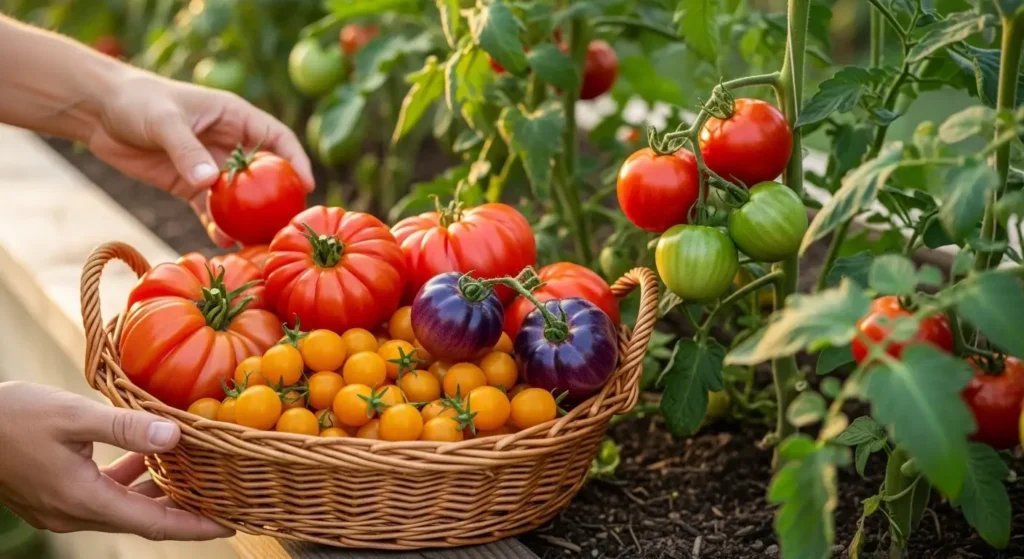
Key Takeaways for Raised Bed Tomato Success
Okay, here’s the stuff that really matters if you want awesome tomatoes:
- Good soil is everything: Don’t cheap out on your soil mix – it’s totally worth it
- Give them space: I know it’s tempting to cram more plants in, but resist!
- Support them early: Put up stakes or cages when you plant, not later
- Water consistently: Deep, regular watering prevents most problems
- Feed them right: Balanced food early on, then less nitrogen when they start flowering
Your Raised Bed Tomato Journey Starts Now
You know what’s awesome? Growing sumptuous raised bed tomatoes isn’t about having some magical green thumb or being born with special garden powers. It’s just about understanding what these plants actually need and setting them up for success.
I’ve basically spilt all my secrets here – everything I wish I’d known when I started this whole adventure. The best part about raised bed gardening is that each year gets better. Your soil improves, you get better at reading your plants, and before you know it, you’ll be the one handing out advice to other gardeners.
What’s your biggest tomato challenge right now? Planning your first raised bed, or trying to fix something that’s not working? I’d love to hear what you’re dealing with and help you figure it out. Please drop a comment and let’s chat about it!
Remember, every garden expert started out killing plants and making mistakes. Your perfect tomato harvest is totally doable – probably just one season away!
Raised Bed Tomatoes: Common Questions Answered
How deep should my raised bed be for tomatoes?
Honestly, 12 inches is the absolute minimum, but if you can swing it, go for 18 inches deep. I learned this the hard way when my shallow beds left my plants looking cramped by mid-summer. The deeper beds just perform so much better – your tomato roots will thank you for the extra space to spread out!
How many tomato plants can I fit in a 4×8 raised bed?
I know it’s tempting to cram as many plants as possible in there (trust me, I’ve been there!), but stick to 4-6 plants max. For the compact determinate varieties, you can do 5-6 plants. For the tall indeterminate ones that just keep growing, limit yourself to 4 plants. It looks like a lot of empty space at first, but properly spaced plants will give you way more tomatoes than crowded ones.
What’s the best soil mix for raised bed tomatoes?
After years of experimenting, here’s my go-to recipe: 40% good compost, 30% aged manure, 20% coconut coir, and 10% perlite. Don’t skimp on the quality here – your soil is literally the foundation of everything. I also toss in some organic fertilizer and bone meal for extra nutrition. This mix drains well but holds moisture, which is exactly what tomatoes want.
